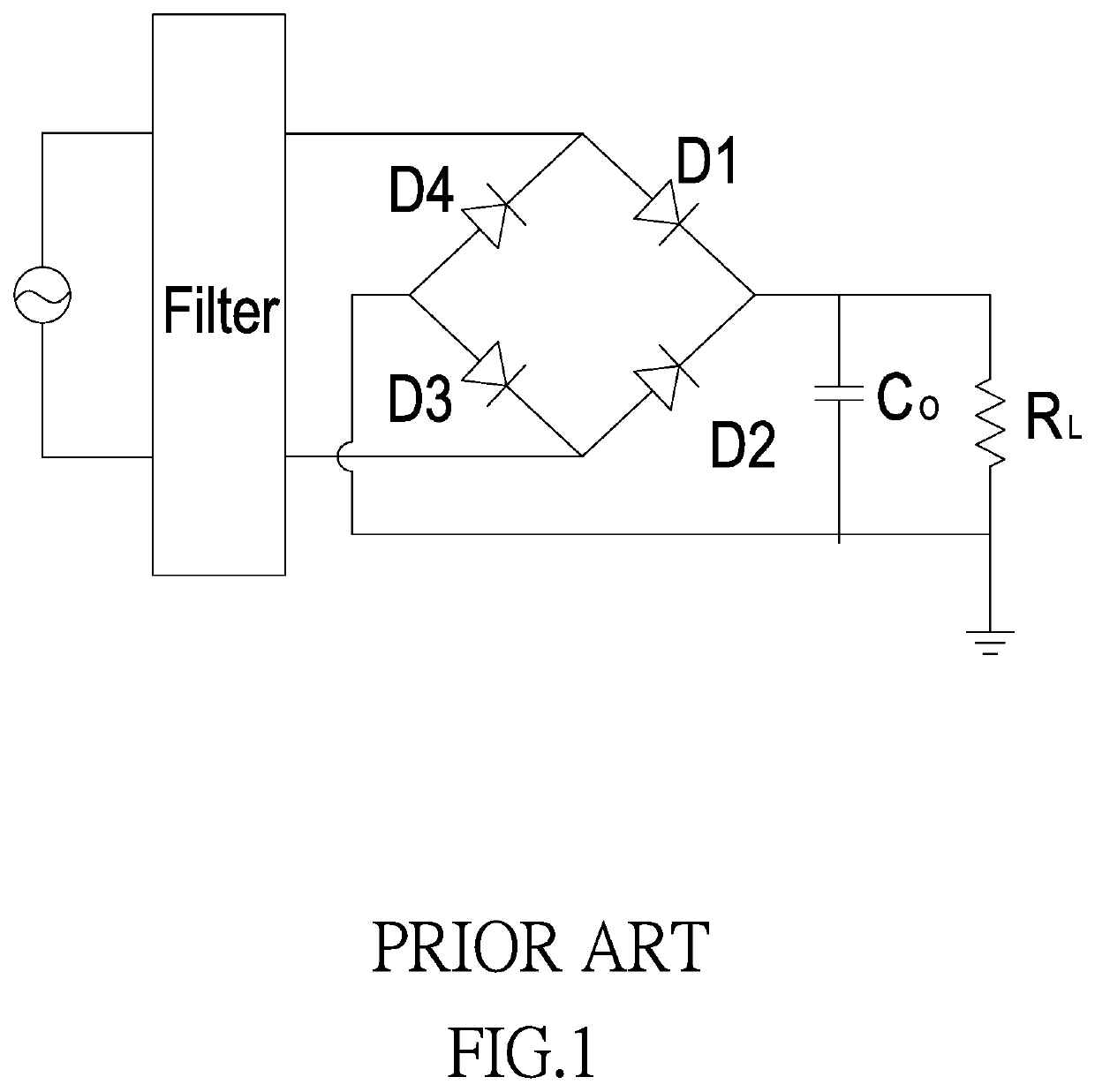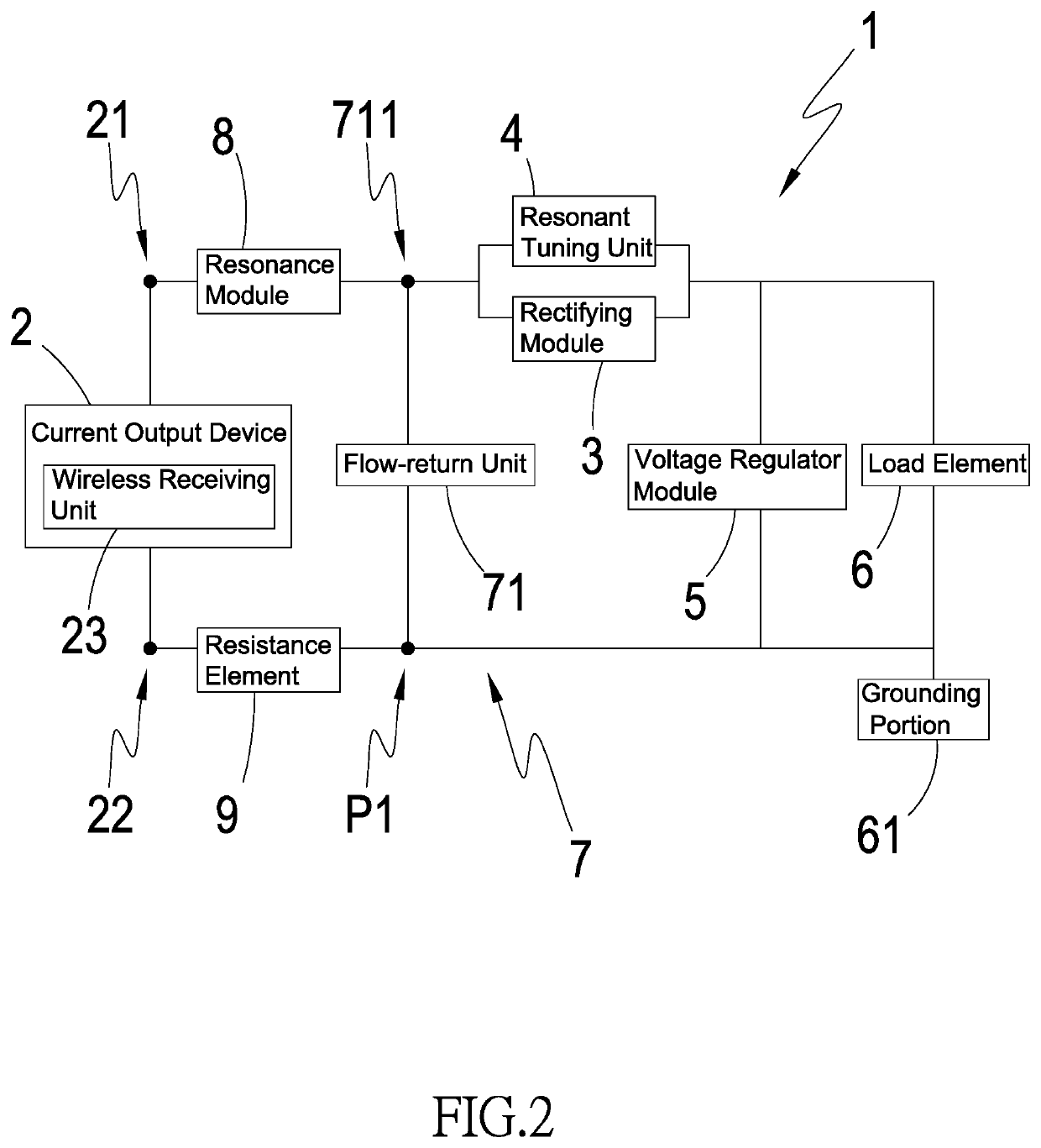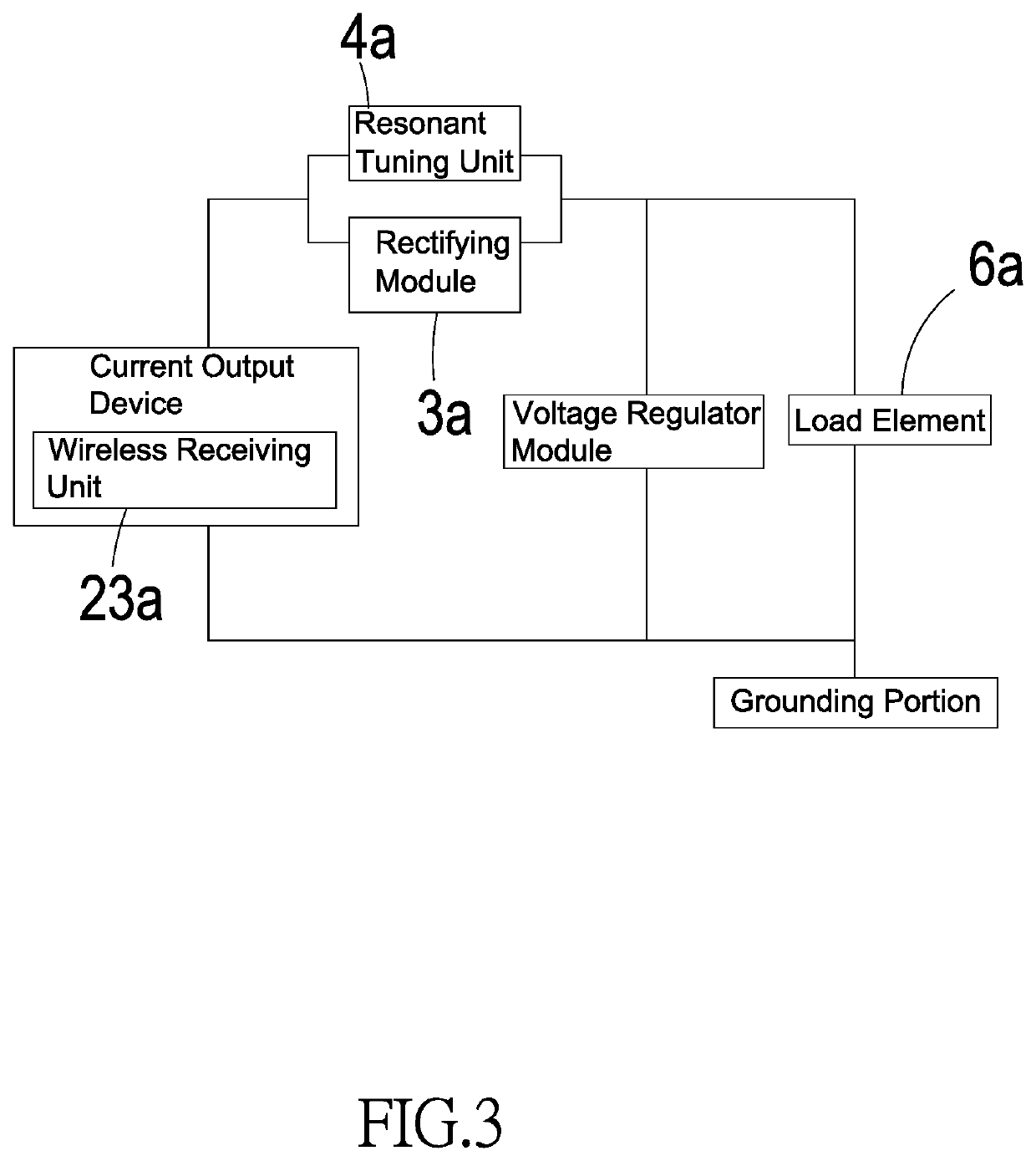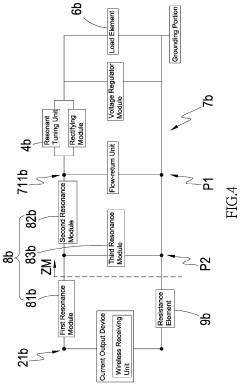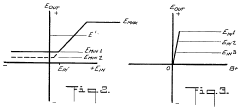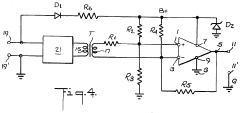Future Trends in Half Wave Rectifier Technology
JUL 15, 20259 MIN READ
Generate Your Research Report Instantly with AI Agent
Patsnap Eureka helps you evaluate technical feasibility & market potential.
Half Wave Rectifier Evolution and Objectives
Half wave rectifiers have been a fundamental component in power electronics since the early days of electrical engineering. The evolution of this technology can be traced back to the invention of the vacuum tube diode in the early 20th century. As semiconductor technology advanced, solid-state diodes replaced vacuum tubes, leading to more efficient and compact rectifier designs.
The primary objective of half wave rectifier technology has always been to convert alternating current (AC) to pulsating direct current (DC). Over the years, the focus has shifted towards improving efficiency, reducing power losses, and minimizing harmonic distortion. These goals have driven continuous innovation in materials, circuit designs, and control strategies.
In recent decades, the advent of power electronics has significantly influenced the development of half wave rectifiers. The integration of advanced semiconductor devices, such as fast-recovery diodes and silicon carbide (SiC) diodes, has pushed the boundaries of rectifier performance. These innovations have enabled higher switching frequencies, lower forward voltage drops, and improved thermal management.
The ongoing trend towards miniaturization and increased power density has also shaped the evolution of half wave rectifier technology. Engineers have been striving to create more compact designs without compromising performance or reliability. This has led to the development of novel packaging techniques and thermal management solutions.
Another key objective in the evolution of half wave rectifiers has been to address the inherent limitations of the technology, such as low efficiency and high ripple content in the output voltage. This has spurred research into advanced control techniques, including synchronous rectification and active power factor correction, which aim to optimize the rectification process and improve overall system performance.
The growing emphasis on energy efficiency and environmental sustainability has further influenced the direction of half wave rectifier technology. Researchers and engineers are now focusing on developing "green" rectifiers that minimize energy losses and reduce electromagnetic interference. This aligns with global efforts to reduce carbon emissions and improve the overall efficiency of power conversion systems.
Looking ahead, the future objectives for half wave rectifier technology are likely to include further improvements in efficiency, power density, and reliability. There is also a growing interest in developing "smart" rectifiers that can adapt to varying load conditions and integrate seamlessly with renewable energy sources and smart grid systems. These advancements will play a crucial role in shaping the future of power electronics and energy distribution.
The primary objective of half wave rectifier technology has always been to convert alternating current (AC) to pulsating direct current (DC). Over the years, the focus has shifted towards improving efficiency, reducing power losses, and minimizing harmonic distortion. These goals have driven continuous innovation in materials, circuit designs, and control strategies.
In recent decades, the advent of power electronics has significantly influenced the development of half wave rectifiers. The integration of advanced semiconductor devices, such as fast-recovery diodes and silicon carbide (SiC) diodes, has pushed the boundaries of rectifier performance. These innovations have enabled higher switching frequencies, lower forward voltage drops, and improved thermal management.
The ongoing trend towards miniaturization and increased power density has also shaped the evolution of half wave rectifier technology. Engineers have been striving to create more compact designs without compromising performance or reliability. This has led to the development of novel packaging techniques and thermal management solutions.
Another key objective in the evolution of half wave rectifiers has been to address the inherent limitations of the technology, such as low efficiency and high ripple content in the output voltage. This has spurred research into advanced control techniques, including synchronous rectification and active power factor correction, which aim to optimize the rectification process and improve overall system performance.
The growing emphasis on energy efficiency and environmental sustainability has further influenced the direction of half wave rectifier technology. Researchers and engineers are now focusing on developing "green" rectifiers that minimize energy losses and reduce electromagnetic interference. This aligns with global efforts to reduce carbon emissions and improve the overall efficiency of power conversion systems.
Looking ahead, the future objectives for half wave rectifier technology are likely to include further improvements in efficiency, power density, and reliability. There is also a growing interest in developing "smart" rectifiers that can adapt to varying load conditions and integrate seamlessly with renewable energy sources and smart grid systems. These advancements will play a crucial role in shaping the future of power electronics and energy distribution.
Market Analysis for Advanced Rectification Solutions
The market for advanced rectification solutions is experiencing significant growth, driven by the increasing demand for efficient power conversion and management systems across various industries. As half-wave rectifiers continue to evolve, the market is witnessing a shift towards more sophisticated and high-performance solutions that address the limitations of traditional rectification technologies.
One of the key factors driving market growth is the rapid expansion of renewable energy sources, particularly solar and wind power. These intermittent energy sources require advanced rectification solutions to convert and stabilize the generated power for grid integration. The market is also benefiting from the growing adoption of electric vehicles, which rely heavily on efficient power conversion systems for charging and motor control.
In the industrial sector, there is a rising demand for advanced rectification solutions in applications such as motor drives, uninterruptible power supplies, and industrial automation. These applications require high-efficiency rectifiers that can handle higher power levels and operate reliably under demanding conditions.
The consumer electronics market is another significant driver for advanced rectification solutions. With the proliferation of portable devices and the increasing focus on energy efficiency, there is a growing need for compact, high-performance rectifiers that can improve power conversion efficiency and extend battery life.
Geographically, Asia-Pacific is expected to dominate the market for advanced rectification solutions, driven by the rapid industrialization and urbanization in countries like China and India. North America and Europe are also significant markets, with a strong focus on renewable energy integration and electric vehicle adoption.
The competitive landscape of the advanced rectification solutions market is characterized by the presence of both established players and innovative startups. Key market players are investing heavily in research and development to improve the efficiency, reliability, and miniaturization of rectification technologies. There is also a growing trend towards the integration of smart features and digital control in rectification systems, enabling better monitoring and optimization of power conversion processes.
As the market for advanced rectification solutions continues to evolve, several trends are shaping its future. These include the development of wide-bandgap semiconductor materials, such as silicon carbide and gallium nitride, which offer superior performance characteristics compared to traditional silicon-based devices. Additionally, there is a growing focus on the development of bidirectional rectifiers that can support both AC-to-DC and DC-to-AC conversion, enabling more flexible power management in applications such as grid-tied energy storage systems.
One of the key factors driving market growth is the rapid expansion of renewable energy sources, particularly solar and wind power. These intermittent energy sources require advanced rectification solutions to convert and stabilize the generated power for grid integration. The market is also benefiting from the growing adoption of electric vehicles, which rely heavily on efficient power conversion systems for charging and motor control.
In the industrial sector, there is a rising demand for advanced rectification solutions in applications such as motor drives, uninterruptible power supplies, and industrial automation. These applications require high-efficiency rectifiers that can handle higher power levels and operate reliably under demanding conditions.
The consumer electronics market is another significant driver for advanced rectification solutions. With the proliferation of portable devices and the increasing focus on energy efficiency, there is a growing need for compact, high-performance rectifiers that can improve power conversion efficiency and extend battery life.
Geographically, Asia-Pacific is expected to dominate the market for advanced rectification solutions, driven by the rapid industrialization and urbanization in countries like China and India. North America and Europe are also significant markets, with a strong focus on renewable energy integration and electric vehicle adoption.
The competitive landscape of the advanced rectification solutions market is characterized by the presence of both established players and innovative startups. Key market players are investing heavily in research and development to improve the efficiency, reliability, and miniaturization of rectification technologies. There is also a growing trend towards the integration of smart features and digital control in rectification systems, enabling better monitoring and optimization of power conversion processes.
As the market for advanced rectification solutions continues to evolve, several trends are shaping its future. These include the development of wide-bandgap semiconductor materials, such as silicon carbide and gallium nitride, which offer superior performance characteristics compared to traditional silicon-based devices. Additionally, there is a growing focus on the development of bidirectional rectifiers that can support both AC-to-DC and DC-to-AC conversion, enabling more flexible power management in applications such as grid-tied energy storage systems.
Current Challenges in Half Wave Rectifier Technology
Half wave rectifiers, despite their long-standing presence in electronic circuits, continue to face several challenges that hinder their widespread adoption in modern applications. One of the primary issues is the inherent inefficiency of these devices. By nature, half wave rectifiers only utilize one half of the AC input cycle, resulting in significant power loss and reduced overall efficiency. This limitation becomes particularly problematic in high-power applications where energy conservation is crucial.
Another challenge lies in the output quality of half wave rectifiers. The pulsating DC output produced by these devices often contains a high level of ripple, which can introduce noise and distortion in sensitive electronic systems. This ripple effect necessitates additional filtering components, increasing circuit complexity and cost. Moreover, the presence of harmonics in the output waveform can lead to electromagnetic interference (EMI) issues, potentially affecting nearby electronic equipment.
The voltage drop across the rectifying diode presents yet another hurdle. In low-voltage applications, this drop can represent a significant percentage of the total voltage, further reducing efficiency and limiting the rectifier's usefulness in certain scenarios. Additionally, the reverse recovery time of diodes used in half wave rectifiers can lead to switching losses, especially at higher frequencies.
Thermal management is also a concern, particularly in high-current applications. The intermittent nature of current flow in half wave rectifiers can cause uneven heating of components, potentially leading to reliability issues and reduced lifespan of the circuit. This challenge becomes more pronounced as power requirements increase, necessitating more robust thermal design considerations.
Furthermore, the non-linear behavior of half wave rectifiers can introduce power factor issues in AC systems. This poor power factor not only reduces overall system efficiency but can also lead to increased electricity costs and potential non-compliance with power quality standards in some applications.
Lastly, the simplicity of half wave rectifiers, while advantageous in some scenarios, can be a limitation in applications requiring precise control or variable output. The lack of sophisticated control mechanisms in basic half wave rectifier designs restricts their adaptability to dynamic load conditions or variable input voltages, limiting their use in advanced power management systems.
Addressing these challenges requires innovative approaches in circuit design, material science, and control strategies. As technology advances, finding solutions to these issues will be crucial for expanding the applicability and improving the performance of half wave rectifiers in modern electronic systems.
Another challenge lies in the output quality of half wave rectifiers. The pulsating DC output produced by these devices often contains a high level of ripple, which can introduce noise and distortion in sensitive electronic systems. This ripple effect necessitates additional filtering components, increasing circuit complexity and cost. Moreover, the presence of harmonics in the output waveform can lead to electromagnetic interference (EMI) issues, potentially affecting nearby electronic equipment.
The voltage drop across the rectifying diode presents yet another hurdle. In low-voltage applications, this drop can represent a significant percentage of the total voltage, further reducing efficiency and limiting the rectifier's usefulness in certain scenarios. Additionally, the reverse recovery time of diodes used in half wave rectifiers can lead to switching losses, especially at higher frequencies.
Thermal management is also a concern, particularly in high-current applications. The intermittent nature of current flow in half wave rectifiers can cause uneven heating of components, potentially leading to reliability issues and reduced lifespan of the circuit. This challenge becomes more pronounced as power requirements increase, necessitating more robust thermal design considerations.
Furthermore, the non-linear behavior of half wave rectifiers can introduce power factor issues in AC systems. This poor power factor not only reduces overall system efficiency but can also lead to increased electricity costs and potential non-compliance with power quality standards in some applications.
Lastly, the simplicity of half wave rectifiers, while advantageous in some scenarios, can be a limitation in applications requiring precise control or variable output. The lack of sophisticated control mechanisms in basic half wave rectifier designs restricts their adaptability to dynamic load conditions or variable input voltages, limiting their use in advanced power management systems.
Addressing these challenges requires innovative approaches in circuit design, material science, and control strategies. As technology advances, finding solutions to these issues will be crucial for expanding the applicability and improving the performance of half wave rectifiers in modern electronic systems.
State-of-the-Art Half Wave Rectifier Designs
01 Circuit design and components
Half-wave rectifiers typically consist of a diode and a transformer. The diode allows current to flow in only one direction, effectively converting AC to pulsating DC. The transformer is used to step up or step down the input voltage as needed. Various circuit configurations and component selections can be employed to optimize performance and efficiency.- Circuit design and components: Half wave rectifiers typically consist of a diode and a transformer. The diode allows current to flow in one direction during the positive half of the AC cycle, while blocking it during the negative half. This design is fundamental to converting AC to pulsating DC. Various circuit configurations and component selections can optimize the rectifier's performance for different applications.
- Efficiency improvements: Researchers have developed methods to enhance the efficiency of half wave rectifiers. These improvements may include reducing power losses, minimizing voltage drops, and optimizing the rectification process. Advanced control techniques and innovative circuit designs can significantly boost the overall performance and energy conversion efficiency of half wave rectifiers.
- Applications in power supplies: Half wave rectifiers are widely used in various power supply applications. They can be found in low-power electronic devices, battery chargers, and some types of voltage regulators. The simplicity of the half wave rectifier makes it suitable for applications where cost and complexity are primary concerns, although it may require additional filtering for smoother output.
- Integration with other circuits: Half wave rectifiers can be integrated with other circuit elements to create more complex power management systems. This integration may involve combining the rectifier with voltage regulators, filters, or control circuits. Such combinations can result in more versatile and efficient power conversion solutions for a wide range of electronic applications.
- Miniaturization and packaging: Advancements in semiconductor technology have led to the miniaturization of half wave rectifier circuits. This trend allows for the development of compact, integrated solutions that can be easily incorporated into smaller electronic devices. Improved packaging techniques have also enhanced the thermal management and reliability of these rectifier circuits.
02 Voltage regulation and smoothing
To improve the quality of the output DC voltage, half-wave rectifiers often incorporate voltage regulation and smoothing techniques. This may include the use of capacitors for filtering, voltage regulators for maintaining a stable output, and additional circuitry to reduce ripple and noise in the rectified signal.Expand Specific Solutions03 Applications in power supplies
Half-wave rectifiers are commonly used in various power supply applications, including low-power electronic devices, battery chargers, and some industrial equipment. They are particularly useful in situations where simplicity and cost-effectiveness are prioritized over efficiency and output quality.Expand Specific Solutions04 Efficiency improvements
Researchers and engineers have developed various methods to improve the efficiency of half-wave rectifiers. These improvements may include the use of advanced semiconductor materials, optimized circuit topologies, and innovative control strategies to minimize power losses and enhance overall performance.Expand Specific Solutions05 Integration with other power conversion systems
Half-wave rectifiers can be integrated into more complex power conversion systems, such as inverters, motor drives, and renewable energy systems. In these applications, the half-wave rectifier may serve as a component within a larger power management architecture, working in conjunction with other circuits to achieve specific power conversion goals.Expand Specific Solutions
Key Industry Players and Competitors
The future trends in half wave rectifier technology are evolving within a mature market, characterized by steady growth and established applications. The industry is in a phase of incremental innovation, with key players focusing on efficiency improvements and miniaturization. Companies like HOYA Corp., Shin-Etsu Chemical, and TOPPAN Holdings are driving advancements in semiconductor materials and manufacturing processes, crucial for enhancing rectifier performance. Huawei Technologies and Texas Instruments are at the forefront of integrating rectifiers into advanced electronic systems, while research institutions such as MIT and the Korea Advanced Institute of Science & Technology are exploring novel materials and designs to push the boundaries of rectifier technology.
Huawei Technologies Co., Ltd.
Technical Solution: Huawei is making significant strides in half-wave rectifier technology, particularly in the context of 5G and IoT applications. Their approach focuses on miniaturization and energy efficiency. Huawei has developed a novel half-wave rectifier design that incorporates advanced CMOS technology, allowing for integration of the rectifier circuit directly into their system-on-chip (SoC) designs. This integration significantly reduces the overall footprint of the rectifier circuit. Huawei's rectifiers also employ a dynamic threshold voltage adjustment technique, which allows the rectifier to maintain high efficiency across a wide range of input voltages, a crucial feature for energy harvesting applications in IoT devices [2]. Furthermore, Huawei is exploring the use of graphene-based materials in their rectifier designs, which could potentially lead to ultra-thin, flexible rectifiers with superior heat dissipation properties [4].
Strengths: Highly integrated solutions, adaptability to varying input voltages, and potential for flexible electronics. Weaknesses: Reliance on cutting-edge materials may lead to higher production costs and potential supply chain issues.
Massachusetts Institute of Technology
Technical Solution: MIT researchers are at the cutting edge of half-wave rectifier technology, focusing on pushing the boundaries of efficiency and applicability in emerging fields. Their latest work involves the development of "self-tuning" rectifiers that can dynamically adjust their characteristics based on input signal properties. This adaptive approach utilizes machine learning algorithms to optimize rectifier performance in real-time, potentially revolutionizing energy harvesting in IoT and wearable devices [7]. MIT is also exploring the use of 2D materials like MoS2 in rectifier designs, which could lead to atomically thin rectifiers with unprecedented performance characteristics [8]. Furthermore, their research into quantum rectification effects could pave the way for next-generation, ultra-efficient rectifiers operating at the quantum level [9].
Strengths: Cutting-edge research with potential for revolutionary advancements, exploration of novel materials and quantum effects. Weaknesses: Many technologies still in early research stages, potentially far from practical implementation.
Innovative Patents in Rectification Technology
High-frequency half-wave rectifier system of low-harmonicity and high-efficiency
PatentInactiveUS10594205B2
Innovation
- A high-frequency half-wave rectifier system with a simplified structure and reduced electronic components, utilizing a resonant tuning unit and voltage regulator module to control the duty cycle and capacitance, thereby reducing harmonic content and electromagnetic interference, and improving conversion efficiency.
Half-wave rectifier circuit
PatentInactiveUS3936720A
Innovation
- A high-gain differential amplifier-based half-wave rectifier circuit operating from a single power supply, eliminating the need for voltage regulation and reducing temperature dependence, with resistor ratios optimized to minimize errors and achieve minimal output voltage drop.
Energy Efficiency Considerations
Energy efficiency is a critical consideration in the future development of half-wave rectifier technology. As power electronics continue to play an increasingly important role in various applications, from consumer electronics to industrial systems, the demand for more efficient rectification processes grows. Half-wave rectifiers, while simple in design, have traditionally been less efficient than their full-wave counterparts. However, ongoing research and technological advancements are paving the way for significant improvements in their energy efficiency.
One of the primary focuses in enhancing the energy efficiency of half-wave rectifiers is reducing conduction losses. This involves developing new semiconductor materials and improving device structures to minimize the forward voltage drop across the rectifying element. Wide bandgap semiconductors, such as silicon carbide (SiC) and gallium nitride (GaN), are showing promise in this area due to their superior electrical properties and ability to operate at higher temperatures and frequencies.
Another avenue for improving energy efficiency is through the optimization of circuit topologies. Researchers are exploring novel configurations that can minimize switching losses and improve overall rectification efficiency. This includes the development of synchronous rectification techniques adapted for half-wave rectifiers, which can significantly reduce power dissipation compared to traditional diode-based designs.
The integration of advanced control strategies is also contributing to enhanced energy efficiency in half-wave rectifier systems. Adaptive control algorithms and digital signal processing techniques are being employed to optimize the rectification process in real-time, adjusting to varying load conditions and input voltages. These smart control systems can help maintain peak efficiency across a wide range of operating conditions.
Furthermore, the miniaturization of half-wave rectifier components is playing a crucial role in improving energy efficiency. Smaller, more compact designs reduce parasitic losses and allow for better thermal management, which in turn leads to improved overall system efficiency. This trend aligns with the broader push towards more compact and efficient power electronic systems across various industries.
As the Internet of Things (IoT) and energy harvesting applications continue to grow, there is an increasing focus on ultra-low power half-wave rectifier designs. These specialized rectifiers are being developed to operate efficiently at very low input voltages and currents, enabling the powering of small sensors and devices from ambient energy sources. This development is crucial for the realization of self-powered IoT devices and sustainable energy solutions.
In conclusion, the future of half-wave rectifier technology is closely tied to advancements in energy efficiency. Through a combination of material innovations, circuit optimizations, intelligent control strategies, and miniaturization efforts, half-wave rectifiers are poised to become more efficient and versatile components in the power electronics landscape.
One of the primary focuses in enhancing the energy efficiency of half-wave rectifiers is reducing conduction losses. This involves developing new semiconductor materials and improving device structures to minimize the forward voltage drop across the rectifying element. Wide bandgap semiconductors, such as silicon carbide (SiC) and gallium nitride (GaN), are showing promise in this area due to their superior electrical properties and ability to operate at higher temperatures and frequencies.
Another avenue for improving energy efficiency is through the optimization of circuit topologies. Researchers are exploring novel configurations that can minimize switching losses and improve overall rectification efficiency. This includes the development of synchronous rectification techniques adapted for half-wave rectifiers, which can significantly reduce power dissipation compared to traditional diode-based designs.
The integration of advanced control strategies is also contributing to enhanced energy efficiency in half-wave rectifier systems. Adaptive control algorithms and digital signal processing techniques are being employed to optimize the rectification process in real-time, adjusting to varying load conditions and input voltages. These smart control systems can help maintain peak efficiency across a wide range of operating conditions.
Furthermore, the miniaturization of half-wave rectifier components is playing a crucial role in improving energy efficiency. Smaller, more compact designs reduce parasitic losses and allow for better thermal management, which in turn leads to improved overall system efficiency. This trend aligns with the broader push towards more compact and efficient power electronic systems across various industries.
As the Internet of Things (IoT) and energy harvesting applications continue to grow, there is an increasing focus on ultra-low power half-wave rectifier designs. These specialized rectifiers are being developed to operate efficiently at very low input voltages and currents, enabling the powering of small sensors and devices from ambient energy sources. This development is crucial for the realization of self-powered IoT devices and sustainable energy solutions.
In conclusion, the future of half-wave rectifier technology is closely tied to advancements in energy efficiency. Through a combination of material innovations, circuit optimizations, intelligent control strategies, and miniaturization efforts, half-wave rectifiers are poised to become more efficient and versatile components in the power electronics landscape.
Miniaturization Trends in Rectifier Circuits
The miniaturization of rectifier circuits has been a significant trend in the development of half wave rectifier technology. This trend is driven by the increasing demand for compact and efficient electronic devices across various industries. As electronic components continue to shrink in size, rectifier circuits are following suit, leading to more space-efficient and cost-effective solutions.
One of the key factors contributing to the miniaturization of rectifier circuits is the advancement in semiconductor technology. The development of smaller and more efficient diodes has allowed for the creation of compact rectifier circuits without compromising performance. These miniaturized diodes offer improved switching speeds and reduced power losses, making them ideal for use in high-frequency applications.
Another important aspect of the miniaturization trend is the integration of rectifier circuits into larger systems-on-chip (SoC) designs. This integration allows for the elimination of discrete components, further reducing the overall size of electronic devices. By incorporating rectifier functionality directly into integrated circuits, manufacturers can achieve higher levels of integration and improved performance in a smaller form factor.
The use of advanced packaging technologies has also played a crucial role in the miniaturization of rectifier circuits. Techniques such as flip-chip packaging and wafer-level packaging have enabled the creation of ultra-compact rectifier modules with improved thermal management and electrical performance. These packaging innovations have made it possible to achieve higher power densities in smaller spaces, meeting the demands of modern electronic devices.
Furthermore, the development of novel materials and manufacturing processes has contributed to the ongoing miniaturization trend. For instance, the use of wide-bandgap semiconductors like silicon carbide (SiC) and gallium nitride (GaN) has enabled the creation of smaller, more efficient rectifier circuits capable of handling higher voltages and frequencies. These advanced materials offer superior thermal properties and lower on-resistance, allowing for further size reduction without sacrificing performance.
As the miniaturization trend continues, researchers are exploring new approaches to push the boundaries of rectifier circuit design. This includes the investigation of nanoscale rectifier structures, such as molecular diodes and quantum tunneling devices, which could potentially lead to even smaller and more efficient rectifier circuits in the future. Additionally, the development of flexible and printable electronics may open up new possibilities for creating ultra-thin and conformable rectifier circuits for wearable and IoT applications.
One of the key factors contributing to the miniaturization of rectifier circuits is the advancement in semiconductor technology. The development of smaller and more efficient diodes has allowed for the creation of compact rectifier circuits without compromising performance. These miniaturized diodes offer improved switching speeds and reduced power losses, making them ideal for use in high-frequency applications.
Another important aspect of the miniaturization trend is the integration of rectifier circuits into larger systems-on-chip (SoC) designs. This integration allows for the elimination of discrete components, further reducing the overall size of electronic devices. By incorporating rectifier functionality directly into integrated circuits, manufacturers can achieve higher levels of integration and improved performance in a smaller form factor.
The use of advanced packaging technologies has also played a crucial role in the miniaturization of rectifier circuits. Techniques such as flip-chip packaging and wafer-level packaging have enabled the creation of ultra-compact rectifier modules with improved thermal management and electrical performance. These packaging innovations have made it possible to achieve higher power densities in smaller spaces, meeting the demands of modern electronic devices.
Furthermore, the development of novel materials and manufacturing processes has contributed to the ongoing miniaturization trend. For instance, the use of wide-bandgap semiconductors like silicon carbide (SiC) and gallium nitride (GaN) has enabled the creation of smaller, more efficient rectifier circuits capable of handling higher voltages and frequencies. These advanced materials offer superior thermal properties and lower on-resistance, allowing for further size reduction without sacrificing performance.
As the miniaturization trend continues, researchers are exploring new approaches to push the boundaries of rectifier circuit design. This includes the investigation of nanoscale rectifier structures, such as molecular diodes and quantum tunneling devices, which could potentially lead to even smaller and more efficient rectifier circuits in the future. Additionally, the development of flexible and printable electronics may open up new possibilities for creating ultra-thin and conformable rectifier circuits for wearable and IoT applications.
Unlock deeper insights with Patsnap Eureka Quick Research — get a full tech report to explore trends and direct your research. Try now!
Generate Your Research Report Instantly with AI Agent
Supercharge your innovation with Patsnap Eureka AI Agent Platform!
